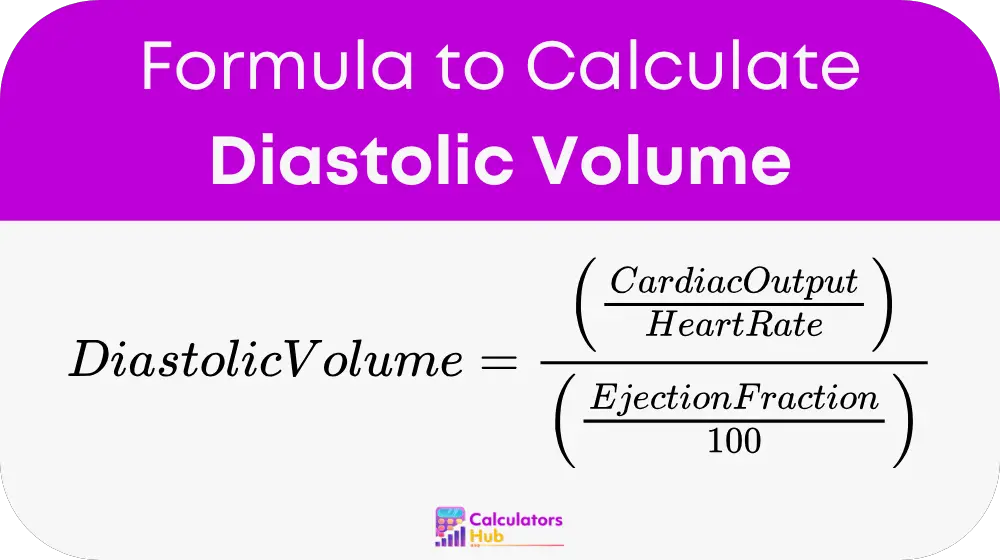El sistema Diastolic Volume Calculator helps determine the amount of blood in the left ventricle at the end of diastole, just before the heart contracts. This measurement is crucial in cardiology to assess heart function and diagnose potential cardiovascular conditions. It provides insights into the heart’s ability to fill with and pump blood efficiently. Medical professionals use this value to evaluate cardiac health, optimize treatment plans, and detect abnormalities in cardiac performance.
Fórmula
The diastolic volume is calculated using the following formula:

dónde:
- Gasto cardíaco (l/min): The total volume of blood pumped by the heart per minute, typically measured in liters per minute (L/min).
- Frecuencia cardíaca (latidos por minuto): The number of times the heart beats per minute.
- Ejection Fraction (%): The fraction of blood ejected from the left ventricle during systole (heart contraction), expressed as a percentage.
This calculation helps determine how efficiently the heart fills with blood during diastole before contracting to pump it out.
Diastolic Volume Reference Table
The table below provides estimated diastolic volume values based on typical heart rate, cardiac output, and ejection fraction medidas.
| Frecuencia cardíaca (lpm) | Gasto cardíaco (l/min) | Fracción de eyección (%) | Diastolic Volume (mL) |
|---|---|---|---|
| 60 | 5.0 | 55 | 151 |
| 70 | 5.5 | 60 | 131 |
| 75 | 6.0 | 65 | 123 |
| 80 | 6.5 | 50 | 162 |
| 90 | 7.0 | 55 | 142 |
These values can assist in interpreting heart function and determining if intervention is necessary.
Example of Diastolic Volume Calculator
A doctor wants to calculate the diastolic volume for a patient with the following cardiac values:
- Salida cardíaca = 6.0 L/min
- Ritmo cardíaco = 75 bpm
- Fracción de eyección = 65%
Usando la fórmula:
Diastolic Volume = (6.0 / 75) / (65 / 100) Diastolic Volume = (0.08) / 0.65 Diastolic Volume ≈ 123 mL
This means the patient’s left ventricle holds approximately 123 ml de sangre at the end of diastole before contraction.
Preguntas frecuentes más comunes
Un normal end-diastolic volume (EDV) normalmente oscila entre 120-160 ml in healthy adults, but values can vary based on age, fitness level, and medical conditions.
Diastolic volume is crucial because it affects volumen sistólico, salida cardíaca y función cardíaca general. Abnormal values can indicate heart failure, valve disorders, or other cardiovascular diseases.
To optimize diastolic volume, patients can focus on regular cardiovascular exercise, healthy diet, blood pressure management, and avoiding excessive sodium intake. Medications may also be prescribed by a healthcare professional.